Chapter 1: Why Choose Jira Work Management?
For years, Atlassian's flagship collection of products known as Jira has been a favorite for project and product managers. This also rings true for those working in the field of information technology service management (ITSM). Jira has come a long way since it debuted in 2002 as an issue- and bug-tracking tool, with several products now having been launched since the initial offering.
So, whether you are a seasoned veteran of the Jira world or brand new to this funny-sounding tool landscape, this book will be just what you need to get up and running with navigating the product known as Jira Work Management (JWM).
As these new Jira products have sprouted up, there has come additional functionality and, unfortunately to an extent, increased complexity in creating, using, and managing projects. Don't get me wrong—I love the flexibility and enhancements that have been made. But I also have years of experience working with the Jira toolset, and for new users and administrators, Jira can be daunting.
Having said all of that, it begs the question: If many products are being offered by Atlassian, why should we choose JWM? The quick answer is that JWM provides a simple and fast path to creating new projects in Jira while incorporating new and exciting functionality not found in other Jira-related products.
At its very essence, JWM is a retooling and rebranding of the initial Jira Core product for business projects. This chapter will describe the differences in the products to help ease the move into this next generation of the tool.
But just being the rebranding of an existing tool is not a good enough reason to choose to use JWM. So, what are some things that set it apart?
First, JWM integrates seamlessly with the existing Jira family of products such as Jira Software (JSW) and Jira Service Management (JSM) projects and the Jira Cloud platform REpresentational State Transfer (REST) application programming interface (API) functionality. This integration means there is already a familiarity with the general execution of Atlassian products and their great reputation.
Add to those reasons the powerful performance of built-in project automation, the simple process of project creation and setup, and a suite of new tools, and you have one of the best new project management products on the market.
In this chapter, we're going to cover the following main topics:
- Comparing project types in Jira
- Review of the Jira Core product
- What's new in JWM?
- New terms learned in this chapter
Upon completion of this chapter, you will be able to describe how JWM projects are different from other Jira projects and which situations are best suited to each product type.
Technical requirements
As JWM is only available in the Jira Cloud environment, the requirement for this chapter is simple: access to a Jira Cloud environment.
If you already have access to Jira Cloud, that's great—you're ready to go! If not, Atlassian provides a free JWM account for up to 10 users. You can create your account by going to https://www.atlassian.com/try/cloud/signup?bundle=jira-core&edition=free and following the instructions.
Comparing project types in Jira
Projects within Jira can be approached from two different viewpoints. One way is to treat a project as you would historically when thinking of projects. As noted by the Project Management Institute (PMI):
"According to the PMBOK® Guide—Fourth edition (PMI, 2008a, p. 434), the definition of a project is a temporary endeavor undertaken to create a unique project service or result. Projects are temporary and close down on the completion of the work they were chartered to deliver." (Source: https://bit.ly/3xoo0Ar)
Another way to phrase the temporary nature of a project is to say that it has defined start and end dates. For example, think of building a house or a building or planning a wedding or a vacation. You know when you start to plan, and you know when the work or effort is finished.
This is certainly one way to approach a project in Jira, but the result will probably be dozens—or even hundreds—of projects in an organization's Jira instance. You will also have the added effort of closing down or archiving projects when completed.
However, I personally believe that most companies and organizations will view Jira projects as the ongoing work being performed by an internal team, whether that be a business team, a design team, or a product development team. While many organizations are often divided into business units (BUs), those can easily be considered to be teams or might even be broken down into multiple teams or squads, depending on the size of the unit.
Projects within Jira fall into three closely related but distinct classes of products. These are JWM, JSW, and JSM. As acronyms help to shorten the text and bring focus to the intended objects, we will sprinkle these throughout the book.
While JSW and JSM projects are very robust and account for the majority of projects in most organizations, the old Jira Core projects (now JWM) have historically been seen as lesser cousins of the two more famous products. Thus, there was a need to bolster a somewhat dying brand within the toolset.
Rodney Nissen, also known as The Jira Guy (https://thejiraguy.com/) has cleverly captured this in a graphic, as shown here:
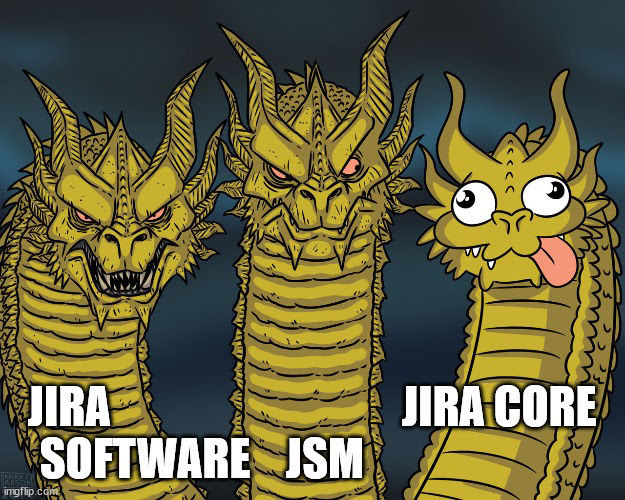
Figure 1.1 – The Jira Guy
No matter which type of project you intend to use, the creation of each begins with the same path. Start by simply clicking on the Projects menu option in the top navigation bar of Jira, followed by clicking on Create project, as illustrated in the following screenshot:
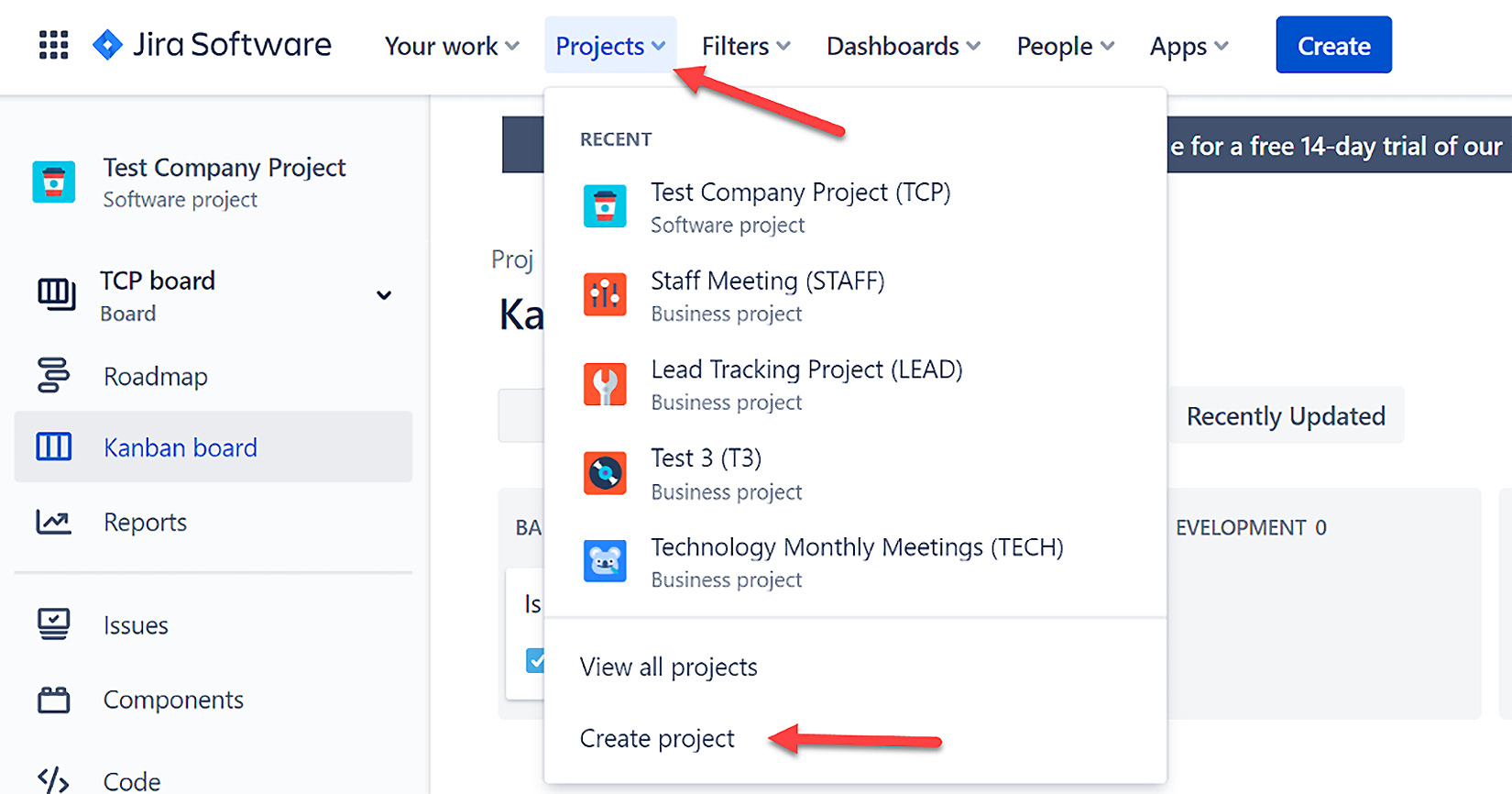
Figure 1.2 – Basic project creation
Each of the next subsections will give a brief overview of the three products, when those types of projects are best used, and—finally—a graphical representation of how to begin the creation process for each.
JWM projects
JWM projects are specifically referred to as business projects within Jira and are designed for typical organizational BUs such as Human Resources (HR), Finance, Legal, Marketing, Sales, Operations, Design, Shipping/Inventory, and Video production. While not all companies will have all these units, it speaks to the power and inclusiveness of JWM's ability to address these areas and perhaps more.
It is worthy of noting that JWM projects have some of the same shared underpinnings of JSW and JSM projects, thereby making it easy for projects of all types to communicate with each other. In fact, you are considered to be in a company-managed project when you create a JWM project. See the Company-managed software projects section for more on this.
Upon selecting Create project, the user is presented with an extensive list of JWM project templates. JWM project templates provide a quick means of getting your project set up by creating a base project, a defined workflow based on the template type, an accompanying board to match the workflow, and the various screens and permissions needed to administer the project. We will delve into JWM templates in more detail in the next chapter, but here is a small list to whet your appetite for what is coming and to give you a view of what the screen will look like when creating a project:
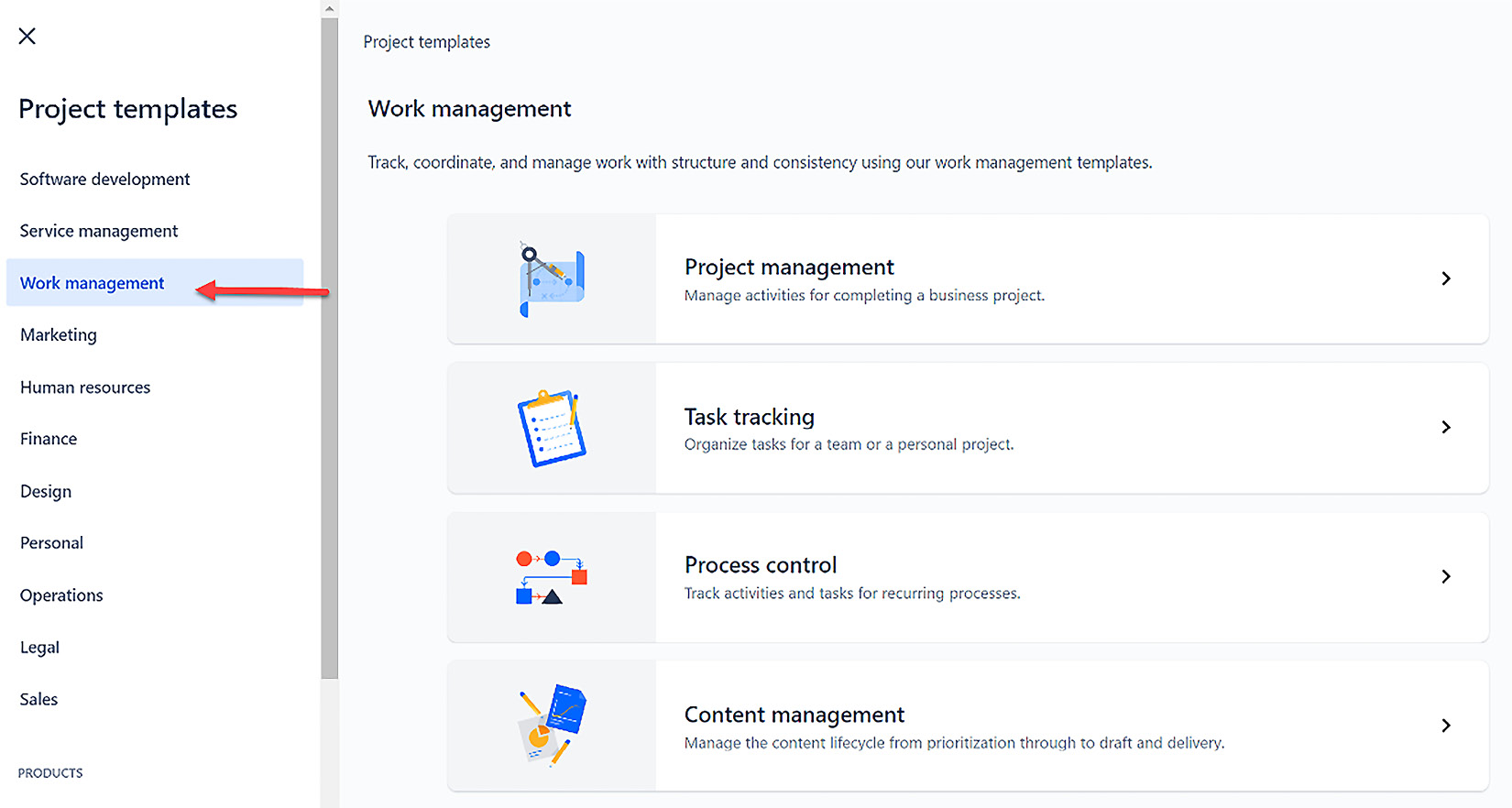
Figure 1.3 – JWM project templates
These business-type projects are more restrictive than JSW projects in that the board cannot be modified, and the columns on the JWM board, shown in the following screenshot, are actually controlled by the statuses found in the accompanying workflow:
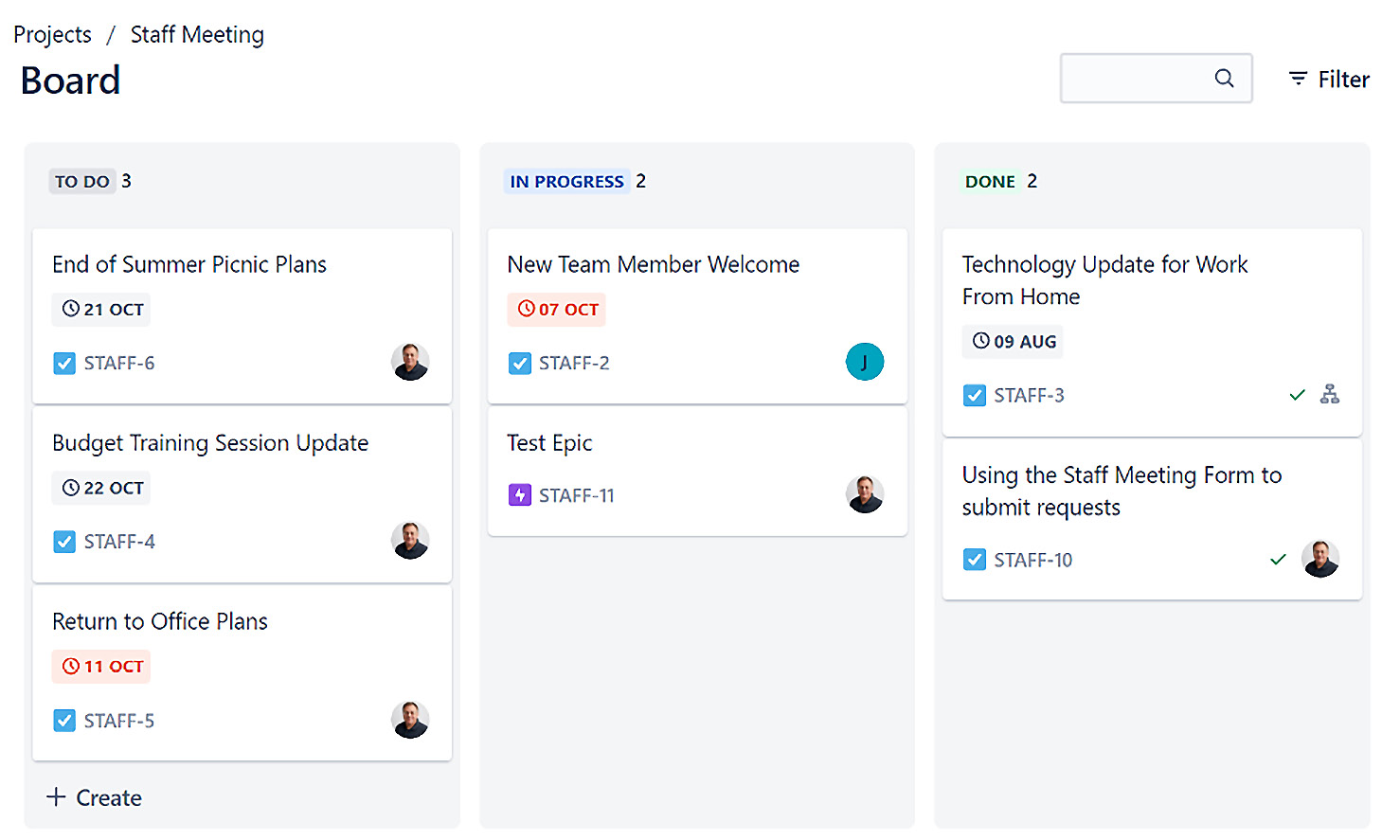
Figure 1.4 – JWM board
Next, let's take a look at the components and operation of JSW projects.
JSW projects
JSW projects, almost by definition, refer to projects primarily related to software development/engineering. These include typical workflows that transition through a combination of architectural design, development, code or peer review, merging of code, quality assurance (QA) testing, deployment, and possibly more. Or course, all these are flexible paths within JSW workflows.
Many organizations also utilize Jira's version of the agile world's favorite Scrum functionality. This includes releases, setting up Sprints, automatically moving uncompleted issues in a completed Sprint to the next Sprint, and so on. As you begin to create your JSW project, you will select from either a Scrum, Kanban, or Bug Tracking template.
The Jira Software Scrum template provides the user with pertinent information about the template type, along with the issue types included in the initial project setup and the statuses in the workflow. Since Scrum typically makes use of Sprints, the template workflow for that option will include simple statuses of To Do, In Progress, and Done.
The other primary type of JSW project is for Kanban. This agile framework is quickly catching on around the world, and Jira provides a mechanism to implement Kanban quickly.
While these types of projects gave rise to this product line of Jira, JSW projects have become the norm for all types of projects within organizations due to the many customizations available in the tool. But the complexity in the initial setup, maintenance, and administration for all that goes with these project types has now given rise to the need for a simpler option. In addition to providing simpler business-related projects via JWM, Atlassian has also introduced team-managed projects.
The Bug Tracking template enables the user to implement a project that not only tracks bugs but also connects issues back to improvements or new features that the bugs are associated with. All of these issue types, along with epics, tasks, and sub-tasks, can be seen on the same board and utilize the same workflow.
Team-managed software projects
Introduced as next-gen projects a few years ago, these software projects allow an independent team to fully administer and manage its projects without the need for a traditional Jira administrator. As with JWM projects, team-managed projects have a simpler interface but reduced functionality. In fact, much of the initial criticism of these projects is that they are too restrictive.
In response, Atlassian is continuing to add much-needed functionality to the tool while maintaining the independent administration that primarily separates it from all other types of projects in Jira. Teams can grant access to users on their own, create their own independent custom fields and automation, and manage their own workflows.
Company-managed software projects
Company-managed projects are the mainstay project types for most organizations using Jira. They provide the most functionality by utilizing shared custom fields, schemes for permissions, screens, workflows, issue types, notifications, and so on. All of these can be modified as necessary, although the user will need to be a Jira administrator to make changes to most of the objects.
Once you have chosen either Scrum or Kanban, you will then decide on Team-managed or Company-managed as the project type. As noted in the following screenshot, you will not be able to convert or change the type of a project once it is created. You will need to create a new project of the appropriate type and move any existing issues from the original project to the new project:
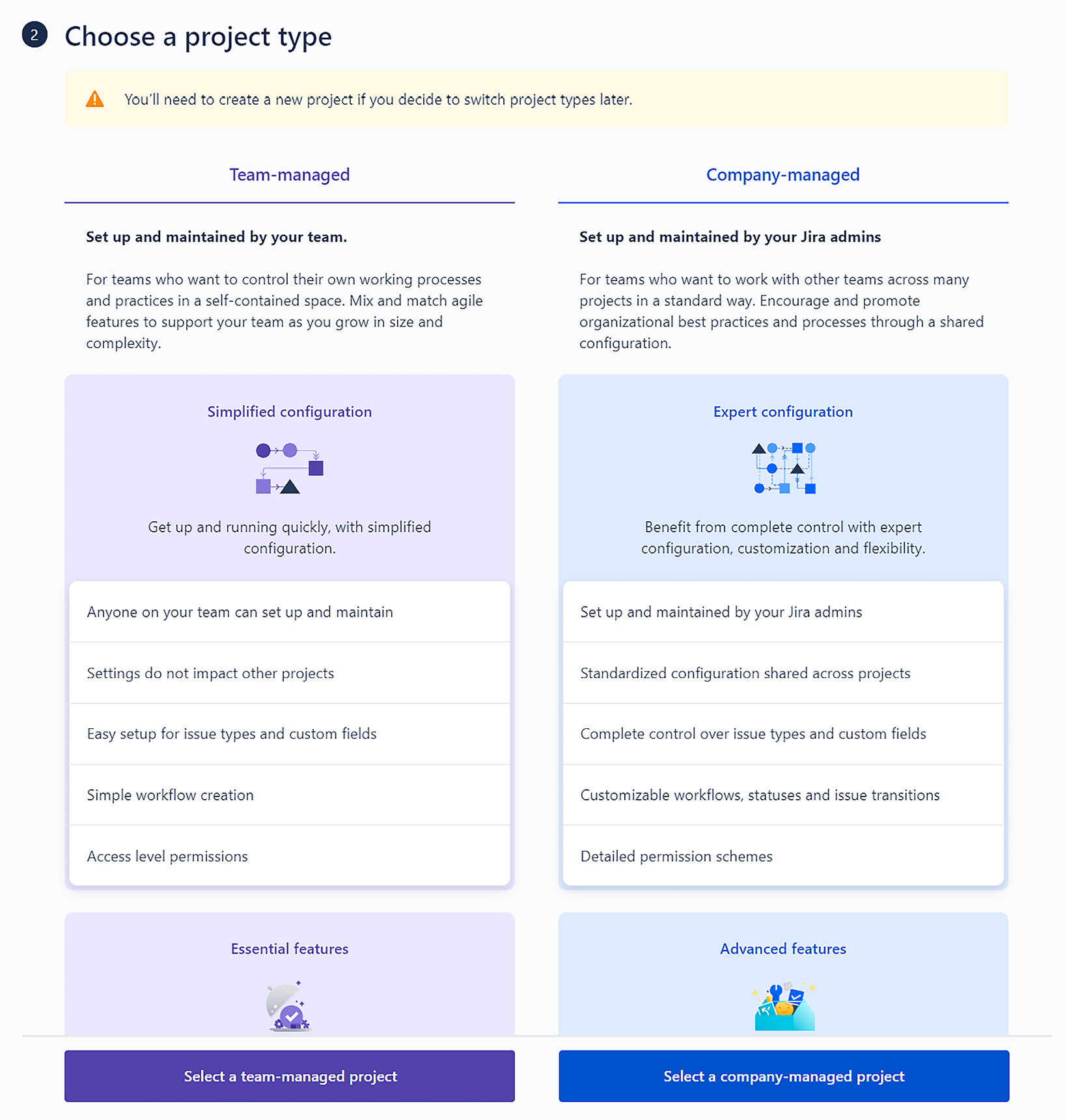
Figure 1.5 – Choosing a team-managed or company-managed project
JSM projects
JSM projects go back to more of the root of Jira's first offering of a ticketing-type tool. They are especially designed for receiving and processing helpdesk types of requests. Perhaps the favorite feature is the helpful portal function, which also incorporates easy-to-fill-in forms.
Another very useful functionality is the concept of non-licensed users (or customers) being able to submit requests. This is a customers feature where the user can be exterior to the organization or even anonymous. This saves on license fees for users who just need to submit a request.
However, for any user who needs to edit field values or transition issues, there is an added cost in that those who are handling the request must be added as agents, which requires an additional license fee.
Just as JWM has some built-in templates to get a project started, JSM also has a handful of templates available, as shown in the following screenshot:
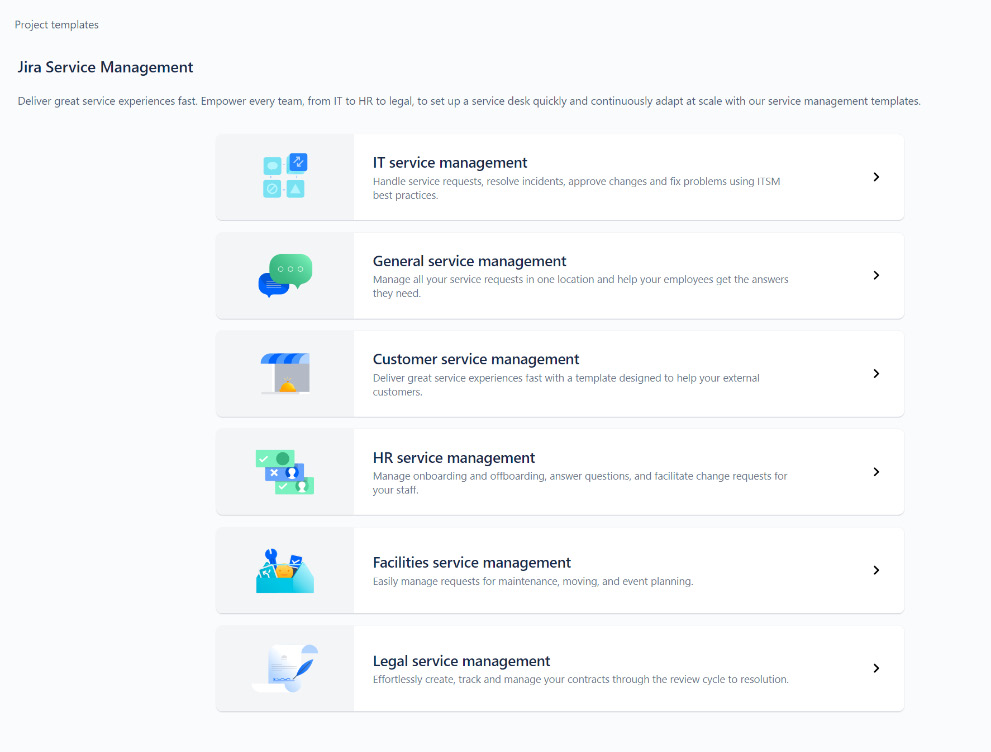
Figure 1.6 – JSM project templates
Now, let's take a quick look at how JWM differs from the old Jira Core product.
Review of the Jira Core product
In 2015, Atlassian split Jira into two different products—Jira Core and JSW. Jira Core was always billed as a simple way to get started with issue tracking and became the base product that was offered when new users came on board with the tool. The focus was on non-technical teams in an organization, oftentimes referred to as business teams.
JSW continues to be aimed at software development teams and provides the most functionality and flexibility of the two products. The two have lived side by side for nearly a decade in versions deployed on-premises (Jira Server) and in the cloud (Jira Cloud). Data Center versions are also available.
While Jira was always intended to be used by technical and non-technical teams alike, the introduction of the JSW product placed an emphasis on Agile development, release management, and software team-related reporting. In fact, the previous releases of Jira leading up to the JSW announcement had already begun implementing many of the features that were coming. As Jira continued to grow in capabilities, it also grew in complexity.
Perhaps the biggest knock against Jira by those newcomers dipping their toe into Atlassian waters for the first time was figuring out the beast that it had become. It seems that the namesake of Gojira (Japanese for Godzilla, and the inspiration for the shortened name of the tool) had to a certain extent become a monster for the rookie user.
To address this issue, Jira Core became the intended safe path into the waters. It kept many of the powerful functionality that had endeared it to the Jira fanbase but provided a simpler approach to getting started with the tool, and all without having to sacrifice what made Jira the best tool for the job for many people.
What's new in JWM?
After more than half a decade since the official rollout of the Jira Core branding, Atlassian decided that a makeover was due. In discussions with a selection of Jira users and Atlassian community leaders, Atlassian product managers and designers embarked on meeting the needs and desires of their customers in the Jira Core product makeover.
As already mentioned, while the underpinning of JWM projects has the same basic structure as company-managed software projects, it's the newest features that really set it apart from other Jira project types. Let's take a look at these here:
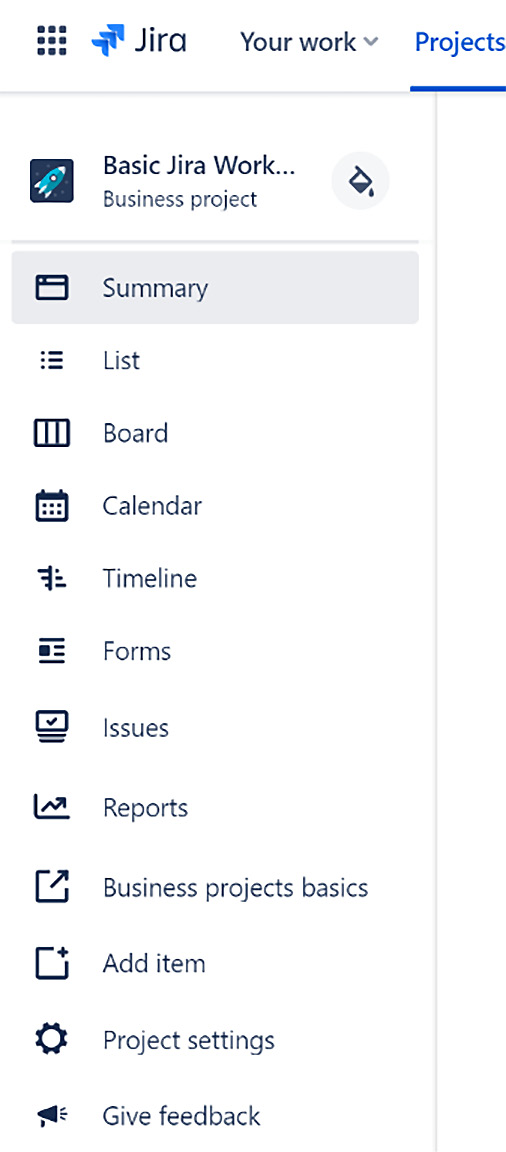
Figure 1.7 – JWM components
We will briefly look at the Jira board and new items here, but each will be expanded on in more detail in the chapters to come. These are listed as follows:
- Summary: This feature provides information through an activity stream for the project and statistics related to issue status, priorities, and assignees.
- List: This feature provides a list of issues for the project while displaying various fields (columns) for the particular issues. It also provides inline editing for each of the fields.
- Board: This is the standard board feature provided for most Jira projects, though it is limited and not editable for things such as the board filter or card and color displays.
- Calendar: This is an in-project calendar relating to issues within the project. It displays issues based on the due date and/or the start date.
- Timeline: This feature is similar to the Roadmap feature available for JSW projects. It displays issues in a Gantt format.
- Forms: Although listed in the plural form, there is actually just one form per project available at the time of writing this book. The form is simple to produce and uses an intake format, using drag and drop fields.
New terms learned in this chapter
Let's conclude the chapter by going through a list of new terms learned in this chapter, as follows:
- JWM: A rebranding of Jira Core Cloud and offered as a new product with many new features.
- Jira Core: An initial Atlassian base project management product closely aligned with business teams.
- ITSM: How IT teams deliver services to their customers and manage that delivery.
- JSW: Atlassian's project management tool aimed at software development teams.
- JSM: A rebranding of Jira Service Desk and Atlassian's ticket management system provided for helpdesk teams such as IT.
- Project templates: A set of preconfigured components and features used to quickly create new JWM projects.
- Board: A visualization of work as cards on a display made up of rows and columns.
- Team-managed projects: JSW projects that are self-contained and geared for individual team use. It is a rebranding of next-gen projects.
- Company-managed projects: JSW projects that use components that can be shared across multiple projects.
- Jira Cloud: Atlassian's platform for products based exclusively on access through the internet.
Summary
Well, there you have it—a concise yet thorough view into the origins of JWM and a discussion of where it fits in the Jira ecosystem.
In this chapter, you have learned about different project types in Jira and when to use them.
We also covered how the original Jira Core tool has changed from the initial offering to the new JWM product. Finally, we took a brief look at the new features available for JWM projects.
So, back to our original question: Why choose JWM? As you have seen, with the availability of multiple project templates and exciting new components such as an inline editable list, Calendar, Forms, and Timeline, it is the easiest and most complete product for business-related projects.
Utilizing this knowledge, you can now get started using Jira in the simplest manner available and be immediately successful in corralling that work into easy-to-use projects. You will be more organized than ever and have information at the tips of your fingers.
In the next chapter, we will learn all about the various JWM templates that are available and how the user can determine which one best fits their requirements.




















